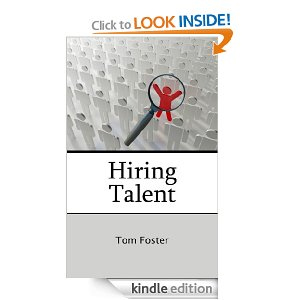From the Ask Tom mailbag –
Question:
You spoke to the Vistage group I attend. I recently transitioned to a new role as the CEO of a lending institution. We are, in essence, structured as a traditional savings and loan, but we only serve a specific target market.
I do not see a model in your book that directly breaks down the strata levels for “banking” organizations. I’m in the midst of a major re-structure, and your info has always been very helpful to me in these situations.
Response:
I am not an expert on banking, so if anyone has specific insights, pile on. The methodology below works for any industry.
- Set your strategy. Review your current strategy documents, including Vision, Mission and Business Model. Those are likely already defined for your organization.
- Define the functions necessary for your organization to operate. Your core function (that which drives revenue) will be surrounded by necessary support functions. My assumption is that your core function is closing loans to specific institutions in the target market you serve. Your ability to book performing loans drives your revenue.
- Book performing loans in target market (core function)
- Marketing, traditional and digital media marketing, including social media (support function)
- Sales, in the guise of customer service at your branch locations (support function).
- Operations, including all physical transaction activity like deposits, checking, loan payments (support function)
- Back office operations, including electronic transaction activity, online banking, debit cards, credit cards (support function)
- Facility operations, including building, building maintenance, leases and real estate (support function)
- Security, including physical security, electronic security, and custodial oversight of cash and bank instruments (support function)
- Regulatory (support function)
- Legal (support function)
- Define the level of work in each function, which is likely the basis for your question. Looking at your core function, booking performing loans in your target market.
- Loans will likely require leads from the marketing department, driven to a branch location or to a telephone loan department.
- The lead probably lands on a desk at S-II level of work, someone to do the initial diagnostic workup and complete the necessary paperwork. Much of this work is systematized and gathered on template forms.
- The loan package is then likely reviewed by a role at S-III level of work to make an initial determination and recommendation to a loan committee. If the loan is missing fundamental elements of collateral or “ability to pay,” this role will likely investigate to determine what is necessary to make the loan conform.
- The loan will then move to a loan committee, comprised of S-III and S-IV roles. There will likely be specialists at S-III to vet the required elements of the loan. The S-IV roles will look at criteria to determine if the loan integrates into the bank’s portfolio. There may also be an S-IV role to ensure the loan will meet regulatory audit.
- The institution will also likely field an S-V role, a business unit president, to make sure the enterprise is supported by all the functions necessary to drive the core function.
Let’s look quickly at one of the supporting functions, physical operations.
- Teller functions and customer service functions are now automated to the point where this role is mid S-I.
- Each teller or customer service person has a supervisor or manager who ensures that services are delivered accurately and that cash and instruments foot (and cross-foot) at the end of each shift. The supervisor schedules the number of tellers and customer service personnel on shift depending on historical and forecast activity.
- Each branch likely has a branch manager at low S-III to manage the overall physical operation. In a small branch, this role might by high S-II, and in a very large branch, this role might be high S-III or S-IV.
Define the level of work for all the other support functions.
- Define the specific roles required in each level of work. The definition of level of work in the previous step goes hand in hand with this step.
- Establish the necessary managerial relationships in each function
- Establish the necessary cross-functional relationships between each function
- Assign and evaluate personnel filling each role.
These are the big steps. If you have questions, please let me know.
